Understanding Crop Circles: A Multidisciplinary Exploration
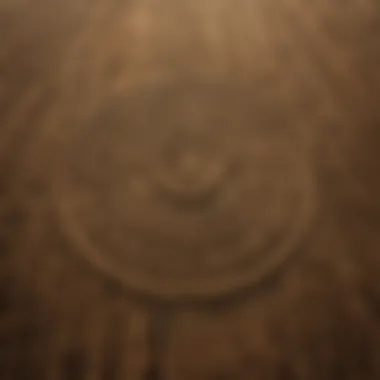

Article Overview
Purpose of the Article
This article seeks to provide a thorough understanding of crop circles by investigating their historical narratives, scientific scrutiny, and cultural ramifications. It aims to unravel the complexities of this phenomenon that has intrigued scholars, farmers, and the general public. The focus is on presenting crop circles not merely as inexplicable patterns in agriculture but as a topic meriting the attention of various academic disciplines. Through a detailed analysis, readers will gain insights into the significance of these formations and the broader implications for human interaction with nature.
Relevance to Multiple Disciplines
Crop circles intersect numerous fields including psychology, geology, and art. Studying them can yield insights that span beyond traditional scientific inquiry:
- Psychology explores the human perception and fascination with mystery phenomena.
- Geology examines the physical characteristics of the environment where crop circles occur.
- Art focuses on the creativity involved in the formation of these designs.
By engaging with these perspectives, the article aims to illustrate how crop circles serve as a point of convergence for interdisciplinary discourse.
Research Background
Historical Context
The history of crop circles can be traced back to the late 20th century, although similar patterns in fields have been observed throughout history. Initially, they were dismissed as hoaxes. With time, however, the emergence of more intricate designs turned the phenomenon into a subject of serious investigation. Events such as the formation in Wiltshire in the 1970s captured public attention, leading to widespread fascination and numerous theories regarding their origin.
Key Concepts and Definitions
To fully engage with the topic of crop circles, it is essential to define some foundational concepts:
- Crop Circle: A pattern created by flattening crops, typically found in cereal fields.
- Formation: Refers to the specific design or layout of the flattened crops, which can vary significantly in complexity.
- Hoax: A deliberate act of deception, often performed by individuals creating fake crop circles for publicity or financial gain.
Understanding these terms establishes a baseline for further exploration, ensuring that the reader is equipped with the necessary context to appreciate the complexities involved in the study of crop circles.
Prologue to Crop Circles
The exploration of crop circles offers insights that extend far beyond the mysterious formations themselves. Understanding crop circles can reveal important facets of cultural, historical, and scientific discourse. These phenomena are often perceived through various lenses, whether as artistic expressions, hoaxes, or even extraterrestrial signs. Each perspective enhances the complexity of the topic.
As urbanization and technology burgeon, it is crucial to consider what crop circles reveal about human interaction with the environment. Studying these formations provides benefits such as fostering multidisciplinary approaches in academia. In this article, we will uncover significant elements that illuminate the motivations behind the creation of crop circles and their implications for different fields of study.
With this knowledge, we can appreciate the broader context of these phenomena and how they reflect human culture and beliefs.
Defining Crop Circles
Crop circles are intricate patterns created by flattening crops in fields. These designs can range from simple circles to elaborate geometric shapes. The formations typically appear overnight and lead to widespread speculation. Many theories surround their origins, from natural phenomena to human intervention.
From an academic standpoint, defining crop circles is not merely about identifying shapes. It encompasses studying the variables that contribute to their formation, including location, type of crops involved, and seasonal timing. Critically, defining crop circles also involves understanding the societal reactions and interpretations they inspire.
Historical Overview
The documentation of crop circles can be traced back to the late 20th century. The first widely recognized crop circle emerged in the late 1970s in England. Since then, they have proliferated globally, with particularly high prevalence in the United Kingdom. Historical accounts reveal a mix of fascination and skepticism from different public sectors.
In the early years, the phenomenon garnered attention primarily from those intrigued by the idea of extraterrestrial messages. This view is evident in media representations that often sensationalize crop circles. As the phenomenon evolved, researchers started to debate between the natural occurrences of these formations and deliberate human creations.
Furthermore, historical patterns show that crop circles have shifted in complexity over time. Initial shapes were often basic, while later designs have displayed advanced geometric principles. This evolution is significant for scholars investigating cultural change and technological innovation in artistic expression, reflecting shifts in public perception and engagement with the phenomenon.
In summary, the introduction to crop circles is multifaceted, encompassing definitions, historical background, and implications for various academic disciplines. This foundation sets the stage for a deeper analysis in subsequent sections.
Scientific Studies on Crop Circles
The investigation of crop circles from a scientific perspective is crucial within the broader context of this exploration. Understanding crop circles is not merely a whimsical pursuit; it requires a systematic analysis grounded in empirical evidence. By examining the intricacies of crop pattern formations, researchers can glean insights into the environmental, cultural, and psychological dimensions of this phenomenon.
Scientific studies provide a framework for analyzing the formations and assessing their authenticity. They have shifted the conversation from mere speculation to rigorous inquiry. Such studies often involve collaborations across disciplines, including geology, biology, and even physics, enriching the understanding of these enigmatic structures. The benefits of this multidisciplinary approach are numerous:
- Enhanced Credibility: Scientific validation of findings fosters a credible narrative rather than myths or unfounded theories.
- Broader Impacts: Understanding the origins and mechanisms behind crop circles can inform agricultural practices and environmental policy.
- Cultural Perspectives: Scientific inquiry intersects with cultural narratives, allowing for a comprehensive understanding of human interaction with these mysterious formations.
In the following subsections, we will dive deeper into specific scientific investigations that elucidate the nature of crop circles.
Geometric Patterns and Analysis
The geometric designs of crop circles are often intricate and complex. These patterns have drawn the interest of mathematicians and physicists who explore their significance and implications. Analyzing their geometric properties can reveal patterns that align with mathematical constructs, such as Fibonacci sequences or fractals.
Several approaches are utilized in this analysis:
- Pattern Recognition: Techniques involving computer algorithms assess the precision and symmetry of the designs, contributing to a better understanding of the formation process.
- Comparative Studies: By comparing crop circles to naturally occurring phenomena can highlight distinctions and similarities that help in categorizing formations.
Thus, understanding geometric patterns can not only enrich the scientific narrative but also provide insight into human cognition regarding these phenomena.
Soil and Plant Studies
The study of soil and plants in relation to crop circles is critical. This examination often focuses on the physical and chemical characteristics of the soil before and after a crop circle appears. Research indicates that crop circles may have localized effects on soil properties. For instance, specific soil samples taken from areas within crop circles sometimes display unusual alterations, affecting moisture levels and nutrient compositions.
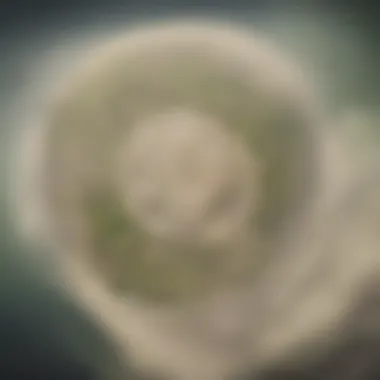
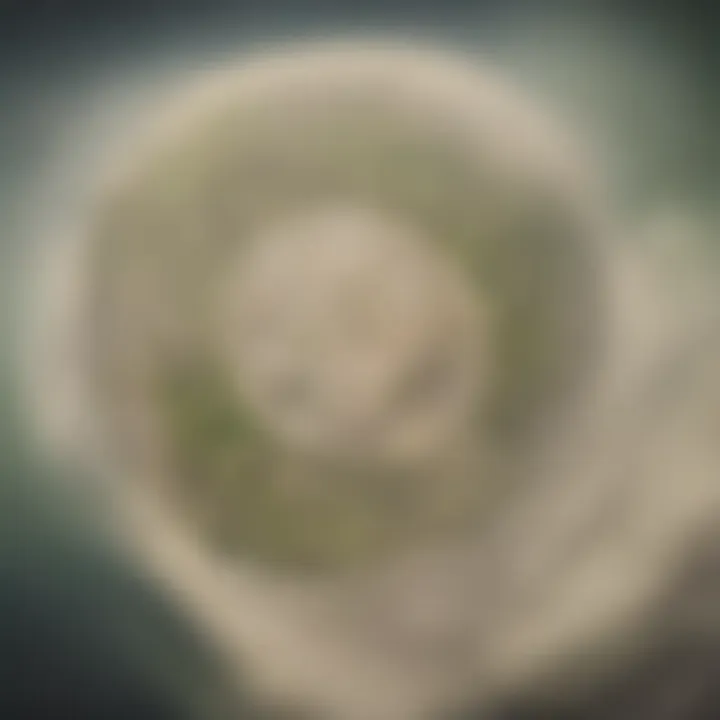
Key findings have included:
- Nutrient Variations: Some studies indicate fluctuations in nutrient levels, suggesting the presence of a phenomenon that impacts plant growth.
- Root Behavior: Analysis of root structures of plants within circles reveals unusual growth patterns, which may suggest different environmental conditions.
These investigations help discern whether crop circles have a benign or detrimental impact on agriculture, leading to implications for farmers and land management practices.
Radiological Investigations
Radiological studies aim to explore the potential for electromagnetic fields to play a role in the formation of crop circles. Researchers often examine the area surrounding a crop circle for anomalous readings of radiation or magnetic fields. Some findings have suggested that these sites may exhibit unique energy signatures, raising questions about their origins.
Methods frequently used include:
- Electromagnetic Field Measurement: Devices measure the electromagnetic fields around and within crop circles to detect abnormal levels that could correlate with specific formations.
- Radiographic Analysis: X-ray or thermographic imaging is employed to observe changes in the structural integrity of the plants affected by crop circles.
These investigations are pivotal as they not only help in understanding the physical properties of crop circles but also open new avenues for scientific inquiry into energy relationships in agricultural settings.
Psychological Perspectives
Psychological perspectives play a significant role in understanding crop circles, particularly as they relate to human behavior, perception, and belief systems. This area examines how individuals and communities interpret crop circles, often shaped by societal and cultural contexts. By exploring these psychological dimensions, we aim to highlight not only how crop circles capture attention but also the implications of these phenomena on broader understanding of human cognition and perception.
Collective Beliefs and Media Influence
The collective beliefs surrounding crop circles are deeply intertwined with media coverage. Media representation shapes public perceptions, creating narratives that can either affirm or challenge existing beliefs. When crop circles are reported, especially in sensationalist ways, they tend to reinforce notions of mystery and intrigue. This leads to a cycle where audiences expect and even seek out more coverage, contributing to the phenomenon's persistence.
Social media platforms like Facebook and Reddit play a crucial part in this narrative construction. Users share personal stories and photos, which can validate experiences and generate interest. This communal sharing phenomenon cultivates a collective consciousness about crop circles.
An important aspect of this influence is how media can selectively highlight specific accounts or theories while neglecting others. For example, when coverage focuses on extraterrestrial explanations, it can detract from scientific or hoax-related discussions. Therefore, it is essential to critically analyze how media frames these topics and how it shapes public beliefs.
Cognitive Dissonance and Interpretation
Cognitive dissonance is a psychological concept that describes the discomfort experienced when one's beliefs conflict with new information. In the context of crop circles, individuals may encounter evidence that contradicts their existing beliefs about their origins. For instance, a person who believes in extraterrestrial involvement may react negatively when presented with evidence supporting human-made designs.
This conflict can lead to bias in interpretation. People may dismiss factual information or reinterpret evidence to align with their perspectives, preserving their original beliefs. This dynamic can create significant barriers to understanding and accepting alternative explanations for crop circles. For example, the idea that they are merely human hoaxes is often rejected by those deeply invested in the mystery.
Encounters with cognitive dissonance serve as a pivotal point in how people approach crop circles. It provokes a choice: either modify their beliefs or rationalize the dissonance. Understanding this process is vital for addressing why some people remain reluctant to embrace scientific explanations despite clear evidence. This reaction reinforces the notion that belief systems regarding crop circles are complex and often resistant to change.
Cultural Significance of Crop Circles
The cultural significance of crop circles extends well beyond their physical manifestations in fields. These formations have become symbols that resonate with various aspects of contemporary society. They evoke curiosity, spark debate, and provoke artistic expression. Recognizing their cultural importance helps to frame the broader discussions around human experience, belief systems, and artistic endeavors.
Understanding crop circles requires us to explore the ways in which they intersect with symbolism and interpretation, as well as their presence in art and literature. From an anthropological viewpoint, the meanings ascribed to these patterns can reveal much about collective anxieties and aspirations. This multi-faceted analysis enhances our comprehension of how cultural narratives shape public perception.
Symbolism and Interpretation
Crop circles are often viewed as enigmatic signs imbued with various meanings. Believers frequently interpret them as messages from extraterrestrial beings or as manifestations of supernatural forces. This perspective reflects broader themes of human fascination with the unknown.
Some experts argue that crop circles reflect environmental consciousness, symbolizing a connection between nature and human creativity. In contrast, skeptics view them primarily as human-made hoaxes or as artistic expressions that challenge traditional norms of landscape usage.
The interpretations can be grouped into several key themes:
- Extraterrestrial Communication: This interpretation suggests that crop circles serve as signals from alien civilizations. Some proponents argue that geometric complexity is beyond human capability, although this has been widely contested.
- Mystical and Spiritual Messages: Many individuals perceive crop circles as signs carrying spiritual significance. They often relate these patterns to ancient beliefs or practices.
- Art and Human Expression: For others, crop circles represent a new form of land art. They challenge conventional boundaries between nature and artistic expression, reshaping how we view creativity.
The context in which these circles appear impacts their interpretations. Local culture, media representation, and historical events all play roles in shaping symbolic meanings. Importantly, beliefs surrounding crop circles often reflect societal concerns, such as environmentalism or skepticism towards science.
Crop Circles in Art and Literature
Art and literature engage deeply with the phenomenon of crop circles, reflecting and reshaping public perception. Artists have used the complexity and intrigue of these formations as inspiration for various mediums. From painting to installation art, crop circles challenge the relationship between art, nature, and space.
In literature, crop circles appear as motifs that embody themes of mystery and the uncanny. They symbolize phenomena that resist straightforward explanations, igniting imaginations and inviting narrative explorations. Notable examples can be found in speculative fiction, where crop circles often play pivotal roles in stories about interactions between humanity and otherworldly beings.
The artistic interpretation of crop circles can serve several purposes:
- Critique of Modern Life: Many artists utilize crop circles to comment on the intersection of nature and technology, questioning humanity's role in environmental degradation.
- Celebration of Nature: Artists also celebrate the beauty of these formations, drawing attention to the intricacies of natural landscapes.
- Social Commentary: Through representation, artists examine the cultural narratives and myths that surround crop circles, offering critiques of media sensationalism and public belief systems.
In summary, the cultural significance of crop circles is rich and varied, encompassing a spectrum of interpretations that reflect broader social concerns. By examining their symbolism and representation in art and literature, we uncover insights into human thought processes, cultural narratives, and the interplay between nature and creativity.
"Understanding the cultural significance of crop circles provides a unique lens through which we can explore the complexities of human belief, creativity, and interaction with the environment."
"Understanding the cultural significance of crop circles provides a unique lens through which we can explore the complexities of human belief, creativity, and interaction with the environment."
The study of crop circles through this cultural framework strengthens our understanding of their impact on society, enriching discussions about belief, creativity, and the natural world.
Contemporary Theories on Origins
The topic of contemporary theories on origins carries significant weight in understanding crop circles. This section explores various hypotheses that address the ongoing debate regarding their creation. Several key elements emerge in this discussion, primarily focusing on the influence of human activity, natural phenomena, and even extraterrestrial explanations. Understanding these theories is beneficial for multiple reasons: they provide context to the enigma that is crop circles, contribute to scientific inquiry, and challenge public perception.


Natural Phenomena Hypotheses
Natural phenomena provide intriguing explanations for crop circles. Some scientists suggest that certain meteorological events or natural occurrences could lead to the formations seen in fields. One example is the theory that whirlwinds or microbursts can flatten crops in a circular pattern. Such incidents may not create the elaborate designs typically associated with intentional hoaxes, yet they demonstrate a natural process at work.
Researchers in soil science and botany have conducted studies to measure the effects of these natural phenomena on the crops. Variations in growth patterns and physical changes in the plants can be observed in areas where these events occur. While natural occurrences can explain some cases, they do not account for all formations. The investigative community often finds it challenging to separate genuine natural phenomena from possible human intervention.
Human Agency and Hoaxes
Human agency plays a crucial role in understanding the origins of crop circles. Many formations have been confirmed as hoaxes created by individuals or groups. In the 1970s and 80s, crop circles received widespread media attention after several admitted to making these intricate designs. This admitted manipulation raises questions about authenticity and perception.
"The acknowledgment of hoaxes not only sheds light on human creativity but also complicates the conversation around the mystery of crop circles."
"The acknowledgment of hoaxes not only sheds light on human creativity but also complicates the conversation around the mystery of crop circles."
The methods used to create these formations vary. Tools such as wooden planks, ropes, and GPS devices have been employed by circle-makers to achieve high levels of precision. Understanding the techniques and intentions behind these human-made circles expands our comprehension of the social and cultural contexts that inform the phenomenon.
Extraterrestrial Theories
Extraterrestrial theories about crop circles often capture the public’s imagination. These hypotheses propose that the complex designs signify communication from extraterrestrial beings. Proponents of this view assert that the positioning and symmetry of certain circles point to intelligence beyond Earth. Some enthusiasts suggest that these formations serve as markers or signals, adding layers of intrigue to the debate.
While there is no scientific evidence to support extraterrestrial involvement, this theory persists across various platforms. It illustrates how human beliefs and the tendency to search for the unknown contribute atmosphere and context to the discussion of crop circles.
In summary, contemporary theories on the origins of crop circles reveal intricate dynamics between human activity, natural events, and fringe scientifically unfounded claims. Each perspective invites further inquiry, prompting both academic and public interest in understanding the broader implications of these formations.
Environmental Implications
Understanding the environmental implications of crop circles provides significant insights into their impact on agriculture and ecosystems. This exploration reveals how these formations, regardless of their origins, interact with the natural world and influence agricultural practices.
Impact on Agriculture
The appearance of crop circles often raises concerns among farmers. These formations can affect crop yields and agricultural productivity. While many crop circles are harmless, the ones created by human agency can lead to crop damage. Farmers may find their fields altered in ways that impact harvest outputs.
- Direct Damage: The flattened areas can hinder growth, leading to reduced yields in the affected sections.
- Crop Management: Farmers must frequently adjust their agricultural management strategies in response to these formations. This may include additional labor to assess and manage the affected fields.
- Legal Consequences: There are instances where landowners seek legal recourse against those who create crop circles, further complicating the relationship between agricultural practices and these mysterious formations.
Ecosystem Considerations
The alterations caused by crop circles also have broader implications for local ecosystems. Changes in land use can influence biodiversity and affect local fauna.
- Disturbance to Wildlife: Areas affected by crop circles may displace wildlife that relies on the habitat for foraging or nesting.
- Soil Composition: After a crop circle is formed, the soil might experience changes in compaction and nutrient distribution. This can alter how plants grow in the medium and affect soil health.
- Microclimate Effects: The creation of crop circles can also influence microclimates within fields, impacting moisture levels and sunlight exposure for nearby plants.
"Recognizing the environmental impact of crop circles is vital for understanding their role in agricultural landscapes and the broader ecosystem."
"Recognizing the environmental impact of crop circles is vital for understanding their role in agricultural landscapes and the broader ecosystem."
In summary, the examination of environmental implications highlights the intricate relationship between crop circles and agricultural practices, and ecosystem dynamics. This prompts a broader reflection on the need for interdisciplinary approaches in studying these phenomena, ensuring that every aspect is considered as we continue to explore the enigma of crop circles.
Media and Public Perception
Media plays a crucial role in shaping public understanding and interpretation of crop circles. The portrayal of these formations often influences people’s beliefs and attitudes, acting as a lens through which they perceive the enigma of crop circles. This section aims to analyze how various forms of media, including documentaries and social media, contribute to the narratives surrounding crop circles. It also considers the benefits and implications of such portrayals for the wider discourse.
Documentaries and Coverage
Documentaries on crop circles have been significant in documenting their existence and exploring different theories. They often feature interviews with researchers, eyewitnesses, and skeptics, offering a multi-faceted perspective. Popular examples include Crop Circles: Quest for Truth and other similar productions. These films tend to have a dramatic tone, presenting crop circles as mysterious phenomena that invite exploration. The imagery used often enhances the mystique, showcasing intricate designs that captivate viewers.
This coverage serves multiple purposes:
- Educating the Public: Documentaries strive to provide factual information, informing viewers about the origins and theories related to these designs.
- Sparking Interest: The visual appeal of crop circles can draw in audiences who may not have considered the topic previously.
- Shaping Perception: Depending on the angle taken, documentaries can either debunk myths or reinforce paranormal assumptions, thereby guiding public beliefs.
It is essential to approach these documentaries critically, assessing their accuracy and intent. Ultimately, they influence how crop circles are viewed by the greater public, echoing through discussions in both academic and casual settings.
Social Media Influence on Crop Circle Narratives
Social media has emerged as a potent platform for sharing information about crop circles. With platforms like Facebook and Reddit, users can easily share images and personal stories, creating a dynamic space for discussion. In this context, social media does not just serve as a tool for information dissemination, but it also cultivates community around shared interests.
Key aspects of social media’s role include:
- Real-time Sharing: Social media allows for immediate sharing of new formations, fostering a sense of excitement and urgency among enthusiasts.
- Diverse Perspectives: People from various backgrounds contribute their interpretations of crop circles. This diversity broadens the discussion and enriches the understanding of the phenomenon.
- Viral Trends: A single post can lead to viral trends that generate widespread discussion. This virality can either enhance interest or perpetuate misinformation.
By examining how narratives are formed and transformed in these spaces, it becomes clear that social media shapes the public discourse around crop circles significantly. As individuals engage in debates and discussions, the understanding of crop circles evolves, highlighting the complex interplay between media and public perception.
"Media representation has the power to shape our reality, influencing what we believe to be true or false about crop circles."
"Media representation has the power to shape our reality, influencing what we believe to be true or false about crop circles."
Overall, understanding media's role in shaping perceptions is vital to grasp the broader implications of crop circle phenomena in modern society.
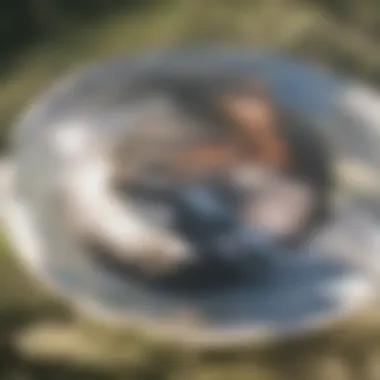
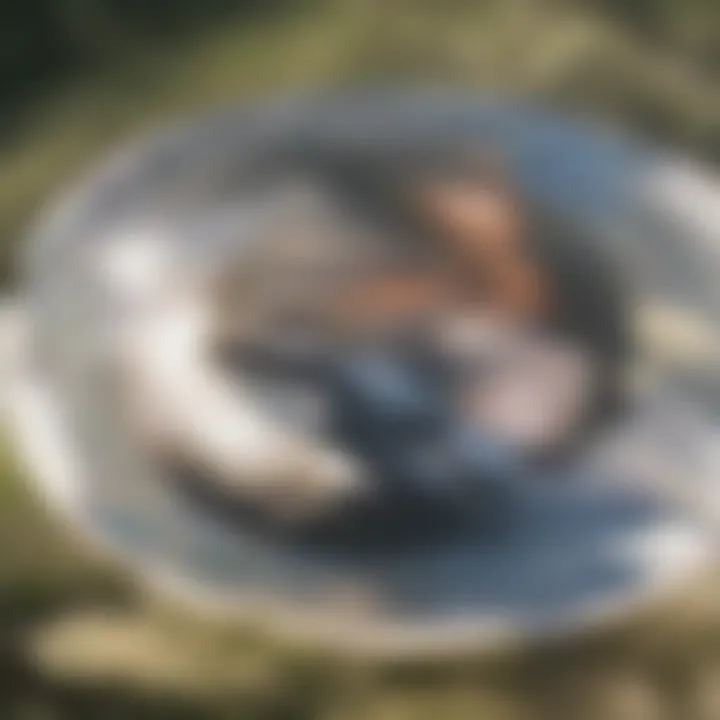
Legal and Ethical Considerations
The legal and ethical dimensions surrounding crop circles are crucial in understanding the broader implications of this phenomenon. As crop circles gain attention, various legal issues arise, primarily related to land use, property rights, and the impact on agricultural operations. It is vital to navigate these complexities to ensure a balanced perspective on the phenomenon that respects both the interests of landowners and the curiosity of the public.
Laws Surrounding Land Use
Laws governing land use have a significant role in the discourse on crop circles. In most jurisdictions, landowners hold the rights to their property, including any modifications or disturbances that occur upon it. Crop circles, often appearing unexpectedly, can lead to disputes between those who appreciate the artistic aspect of these formations and those who see them as a nuisance or a form of trespass.
Farmers may face various consequences caused by crop circles. These include:
- Economic loss due to damaged crops, which can affect yield and profitability.
- Liability concerns, where landowners could potentially hold individuals accountable for any costs related to repairing the field or mitigating damages.
Ordinances may vary, with some regions imposing stricter regulations to protect agricultural interests while others may have lenient enforcement concerning disturbances that occur from visitors or enthusiasts drawn to these sites. Understanding these laws is essential for anyone interested in studying or exploring crop circles.
Ethics of Artistic Interventions in Fields
The ethics surrounding artistic interventions in fields are pertinent to the ongoing discussion about crop circles. Some view these formations as forms of artistic expression or as temporary installations that should be celebrated rather than condemned. Others argue that they disrespect the land and disrupt agricultural practices.
Here are some ethical questions that arise:
- Ownership and Consent: Should individuals create formations in fields without explicit permission from landowners? Many would contend that respect for private property is paramount.
- Cultural Appreciation vs. Appropriation: Is the fascination with crop circles merely a form of cultural appropriation, or is it a sincere appreciation of a unique form of expression? Acknowledging the diverse viewpoints can lead to a more nuanced debate in the community regarding these formations.
Understanding the ethical implications of crop circles encourages a conversation that respects both the agricultural community and the interests of enthusiasts and researchers. Balancing these perspectives is essential for fostering a constructive dialogue about the future of crop circles and their place in society.
"Legal frameworks and ethical considerations are integral to managing the complexities of crop circles. They provide the structure needed to engage in informed discussions about this captivating phenomenon."
"Legal frameworks and ethical considerations are integral to managing the complexities of crop circles. They provide the structure needed to engage in informed discussions about this captivating phenomenon."
As research on crop circles continues, legal and ethical considerations will play a crucial role in shaping public policy and influencing the future direction of the study.
Future Directions in Crop Circle Research
The study of crop circles continues to evolve, driven by advances in technology and interdisciplinary collaboration. Understanding the future directions in this research area is crucial for uncovering the mysteries that still surround these fascinating formations. Here, we outline key elements that promise to enhance our understanding and offer unique insights into the phenomenon.
Technological Advances in Detection and Analysis
Technological developments play a central role in crop circle research. Modern tools can significantly improve the detection and analysis of these formations. One promising approach is using remote sensing technologies, including satellite imagery and drone surveillance. These tools can capture high-resolution images of crop circles, providing data that was difficult to obtain in the past.
Additionally, geographic information systems (GIS) allow researchers to analyze spatial patterns and relationships within crop circles. This technology can help in mapping their distribution over time, revealing possible correlations with environmental variables or human activity.
Benefits of these advances include:
- Enhanced accuracy in identifying crop circles
- In-depth analysis of their shapes and sizes
- Timely data collection that captures formations as they appear
Moreover, combining these technologies with machine learning algorithms can facilitate the identification of patterns that humans might miss. This multidisciplinary approach can yield deeper insights into the origins and implications of crop circles.
Interdisciplinary Approaches to Understanding
Interdisciplinary collaboration is essential to unlock a comprehensive understanding of crop circles. Researchers from diverse fields such as archaeology, sociology, and environmental science can contribute unique perspectives and methodologies.
For instance, archaeologists can examine historical data and ancient practices of land use that may relate to current crop formations, while sociologists can explore the cultural narratives surrounding crop circles. This collaboration can lead to a richer understanding of how crop circles are perceived and their potential impact on local communities.
Considerations for integrating disciplines include:
- Promoting knowledge exchange among specialists
- Encouraging joint research initiatives
- Hosting conferences that focus on crop circle studies from multiple perspectives
In summary, the future of crop circle research is bright, bolstered by technological innovations and collaborative efforts across disciplines. These approaches hold the potential to unveil deeper meanings and interactions associated with crop circles, ensuring this topic remains a dynamic field of inquiry.
"Understanding the complexities of crop circles requires not only advanced techniques but also a collective effort from various academic spheres."
"Understanding the complexities of crop circles requires not only advanced techniques but also a collective effort from various academic spheres."
Epilogue
The conclusion serves as a critical component of this article, consolidating the diverse elements discussed throughout the exploration of crop circles. It provides a synthesis of insights from history, scientific studies, psychological perspectives, and cultural significance. By integrating these perspectives, the conclusion not only reinforces the complexity of crop circles but also showcases their multifaceted nature as both a phenomenon and a subject of scholarly inquiry.
Summary of Findings
The examination of crop circles reveals several key findings:
- Historical Context: Crop circles have a rich historical background, with reports dating back centuries. Their patterns often reflect cultural symbols and community beliefs, which add depth to their significance.
- Scientific Investigations: Various studies approached crop circles from scientific angles, such as analyzing soil properties and radiological investigations. Many findings indicate natural explanations for some formations, while others remain puzzling.
- Cultural and Psychological Impact: The impact of crop circles extends to psychological dimensions, where media presence shapes public belief and interpretation. This highlights how narratives influence perception and understanding.
- Future Directions: Current theories explore a range of origins, from natural phenomena to human intervention and even extraterrestrial connections, urging continued research and investigation.
Overall, the topic transcends mere intrigue, engaging with important questions about our interaction with nature and the influences of culture and belief.
Implications for Future Inquiry
The implications of this exploration are substantial for future research:
- Interdisciplinary Approaches: Engaging multiple disciplines—such as sociology, anthropology, and environmental science—will be essential in fully understanding the implications of crop circles. This will create a more integrative framework for study.
- Technological Advancements: Implementing new technologies for detecting and analyzing these formations can further illuminate their origins, providing more precise data for researchers.
- Environmental Context: Understanding the broader environmental implications is crucial. Research on the ecological effects of crop circles can lead to valuable insights regarding human interaction with natural spaces.
- Cultural Studies: Further studies on the role of mythology and folklore in shaping perceptions of crop circles may enrich our knowledge of human belief systems.
The exploration of crop circles is not merely about the shapes found in fields. It connects deeply with cultural narratives, scientific curiosity, and philosophical inquiries into existence.
The exploration of crop circles is not merely about the shapes found in fields. It connects deeply with cultural narratives, scientific curiosity, and philosophical inquiries into existence.



